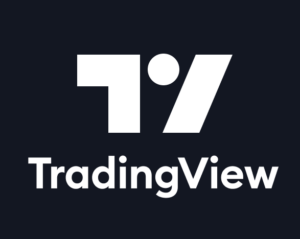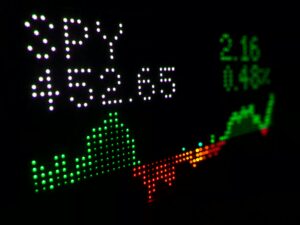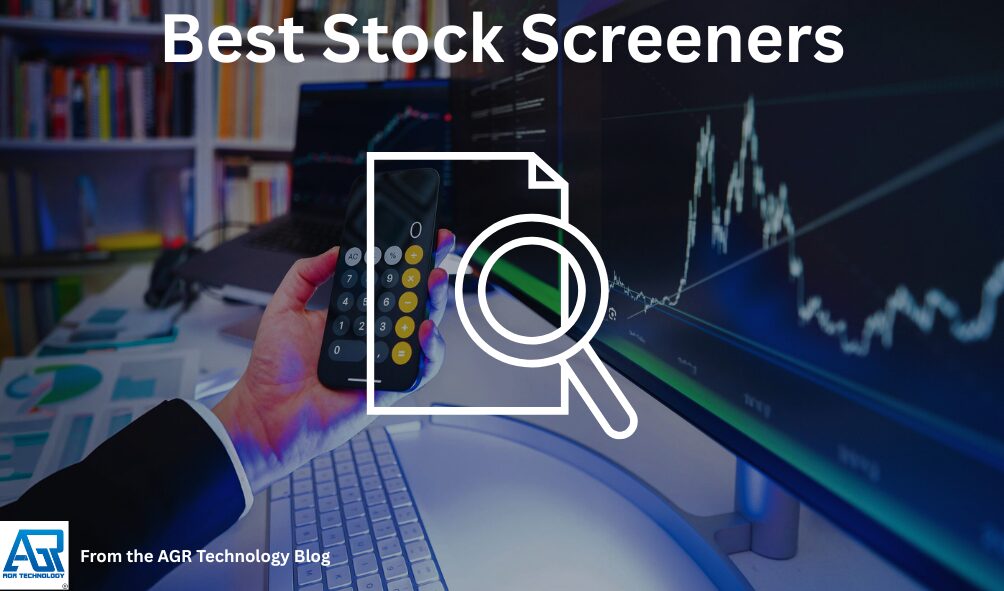Disclaimer: General information only. All kinds of investment (particularly trading CFDs, Cryptocurrency, commodities, and FX) involve significant risk, including the possibility of losing more than the amount invested, as well as market volatility and liquidity hazards. Past performance does not guarantee future results. This page contains sponsored links whereby we may receive compensation at no cost to you.
Finding the right stocks in today’s sprawling market feels a bit like looking for a needle in a haystack, except the haystack has thousands of needles, and you’re trying to pick the sharpest one. That’s where stock screeners come in. These tools cut through the noise, helping you zero in on opportunities that fit your strategy, whether you’re day trading, swing trading, or building a long-term portfolio.
A stock screener is essentially a powerful filter that lets you sort through thousands of stocks based on criteria that matter to you, valuation ratios, earnings growth, technical indicators, market cap, and more. Instead of manually combing through endless data, you set your parameters and let the screener do the heavy lifting. It’s a game-changer for anyone serious about investing.
In this guide, we’ll walk through the best stock screeners available, how they stack up, what features matter most, and how to use them effectively. Whether you’re just starting out or you’re a seasoned trader looking to upgrade your toolkit, you’ll find something here that fits.
Top Stock Screener Applications & Platforms For December 2025
Ziggma

Ziggma stands out with its proprietary AI-driven stock rating system that evaluates companies across 25 financial metrics. The platform assigns quality scores from 0-100 based on fundamental analysis, growth metrics, valuation models, and technical indicators. Research shows that stocks with Ziggma quality scores above 80 have historically outperformed the S&P 500 by an average of 12% annually.
Beyond its scoring system, Ziggma offers portfolio analysis tools that identify concentration risks and suggest optimization strategies. Its natural language processing capabilities scan financial news and earnings calls to extract sentiment data, providing additional context for investment decisions. With plans starting at $9.90/month, Ziggma represents one of the most affordable entry points into AI-powered investment research.
Pros:
- Streamlined Portfolio Tracking: Investors who manage multiple accounts can benefit from Ziggma’s account aggregation feature, which consolidates holdings into a single dashboard. This enables clearer visibility across stocks, ETFs, and dividends, simplifying portfolio monitoring without the need for manual updates.
- Algorithm-Based Scoring System: Users interested in data-driven investment decisions can utilize Ziggma’s proprietary scoring model, which evaluates company fundamentals and portfolio diversification. This feature supports informed assessments by highlighting potential strengths and risks within the portfolio.
- Portfolio Simulator: Those focused on understanding portfolio risk and potential return scenarios will find the portfolio simulator helpful. It allows investors to model adjustments and project possible outcomes, aiding in the refinement of investment strategies with a practical forecasting tool.
- Multi-Tier Pricing Plan: Ziggma offers different pricing tiers, accommodating various investor needs—from individuals looking for basic portfolio insights on a limited budget to those requiring access to more advanced analytics and account linking. This flexible structure helps users select plans aligned with their investment goals and resource availability.
Cons:
- No Trade Execution Capability: Ziggma serves as an analysis and management tool rather than a brokerage platform. Investors who require direct buying or selling of securities must use separate trading accounts in conjunction with the software.
- Limited Advanced Features: While the platform provides core portfolio management functions, users seeking comprehensive technical analysis or advanced screening beyond fundamental data may find some limitations in the available tools.
- Limited Support Options: Ziggma’s customer support is primarily online, which might affect users who prefer direct, real-time assistance through additional channels such as phone or live chat.
Trade Ideas

Trade Ideas stands out as a pioneer in AI-powered stock screening with its virtual analyst, “Holly.” This sophisticated platform scans over 8,000 stocks daily using more than 70 algorithms to identify profitable trading opportunities. Holly analyzes market patterns, technical indicators, and price movements to generate actionable trade ideas with impressive accuracy rates of up to 60% in favorable market conditions.
The platform offers real-time alerts and customizable scanning parameters that adapt to changing market conditions. What makes Trade Ideas particularly valuable is its backtesting capabilities, allowing investors to test strategies against historical data before risking real capital. Subscription plans start at $84/month, making it ideal for active traders and serious investors seeking AI-driven market insights.
Trade Ideas is a comprehensive trading platform focused on advanced stock scanning, AI-powered trade assistance, and multi-window market analysis. It caters to traders who seek real-time insights, customizable technical tools, and a structured environment to identify trading opportunities in U.S. equities.
Pros:
- Advanced Stock Scanner: Trade Ideas offers a highly configurable stock scanner that continuously updates in real-time. Traders interested in momentum trading, technical pattern recognition, or volume-based setups will find this tool particularly useful for filtering through thousands of U.S. stocks and ETFs to pinpoint potential trade candidates efficiently.
- AI-Driven Trade Recommendations: The platform’s artificial intelligence system, known as “Holly,” analyzes market data from multiple angles—including technical, fundamental, and social sentiment—to generate trade ideas with suggested entry and exit points. Active traders who appreciate algorithmic support for decision-making and reducing emotional bias can leverage these AI strategies to enhance their trading routines.
- Multi-Window Layout and Channel Bar: Trade Ideas supports multiple customizable windows within the workspace, enabling users to monitor various market segments simultaneously, such as top gainers, losers, RSI extremes, and sector ETFs. Traders who prefer comprehensive market overviews and multi-tasking will benefit from this feature to manage diverse watchlists effectively.
- Simulated Trading and Backtesting Tools: The platform includes paper trading and backtesting functionality, allowing users to practice strategies without financial risk and validate their approaches with historical data. This is ideal for beginners honing their skills, educators demonstrating concepts, and experienced traders refining strategy parameters.
- Integrated Trade Execution (Brokerage Plus): By connecting compatible brokerage accounts, users can place trades directly from Trade Ideas, reducing the time between idea identification and execution. Day traders and swing traders who prioritize speed and workflow efficiency will find this integration valuable for capitalizing on timely opportunities.
- Extensive Training and Educational Resources: Trade Ideas provides access to live trading rooms, video tutorials, user guides, and daily support sessions. Traders new to technical analysis or those seeking continuous learning will appreciate these resources to build confidence and deepen their market understanding.
Cons:
- Limited Asset Coverage: Trade Ideas currently focuses exclusively on U.S. stocks and ETFs, without support for other asset classes such as futures, forex, or cryptocurrencies. Traders requiring multi-asset or international market exposure might need to supplement with other platforms.
- Learning Curve and Interface Complexity: The platform’s rich functionality and customizable workspace require an initial investment of time to master. Traders who prefer simple or minimalist interfaces may find it challenging to navigate and optimize their workflow without dedicated study.
- Subscription Cost: Trade Ideas is a subscription-based service with pricing that reflects its advanced features. Traders with budget constraints or those seeking more basic scanning tools might consider alternative options.
- No Native Mobile Application: While browser and desktop versions are available, Trade Ideas lacks a dedicated mobile app. Traders who require on-the-go access may find this limiting for real-time monitoring outside of a desktop environment.
- Automated Trading Overrides: The platform supports automated trading strategies based on AI recommendations; however, this can sometimes reduce direct user control over individual trade decisions. Traders valuing hands-on discretion should weigh the balance between automation and manual intervention.
- No Standalone Trade Execution Without Broker Link: Trade Ideas does not execute trades independently and requires linkage to supported brokers for order placement. Users must maintain brokerage accounts with compatible firms to take advantage of integrated trading features.
FINVIZ Elite

FINVIZ Elite enhances the popular free stock screener with advanced AI capabilities and real-time data. The platform utilizes machine learning algorithms to identify correlations between various market indicators that human analysts might miss. Its heatmap visualization tools provide instant insights into sector performance and market trends.
The backtesting feature allows investors to evaluate how specific screening criteria would have performed historically, with data suggesting strategies tested on FINVIZ Elite have shown up to 25% improvement in accuracy compared to traditional screening methods. At $39.96/month, FINVIZ Elite offers an excellent balance of sophisticated AI analysis and user-friendly interface, making complex market data accessible to investors at all levels.
Pros:
- Data Visualization Tools: FINVIZ offers interactive heatmaps, sector maps, and detailed charts that visually represent market trends, performance, and capitalization. These visualization tools help traders and investors quickly grasp market conditions and identify potential opportunities by simplifying complex datasets into intuitive graphics.
- Ideal for: Visual learners, swing traders, portfolio managers, and anyone who benefits from clear, visual representations of market data.
- Robust Stock Screening: With a broad range of fundamental and technical criteria, the platform’s stock screener enables filtering through thousands of equities and ETFs. Users can tailor searches with filters such as price, volume, sector, technical indicators, and fundamental metrics, allowing personalized strategy development.
- Ideal for: Active traders, swing traders, long-term investors, and analysts seeking to identify specific stock characteristics.
- Real-Time and Pre-Market Data (Elite Subscription): The Elite tier provides access to up-to-date quotes and market movements, including pre-market and after-hours data. This feature supports timely decision-making based on current market conditions.
- Ideal for: Day traders, swing traders, and active investors who require immediate market insights.
- Portfolio Management and Alerts
- Users can create multiple portfolios and watchlists, track individual stock performance, and set alerts for price changes or news updates. This supports ongoing monitoring and strategic adjustments.
- Ideal for: Investors managing diversified holdings and traders seeking to automate market monitoring.
- Cryptocurrency and Forex Screening
- Beyond equities, FINVIZ offers tools to screen and analyze cryptocurrencies, futures, and Forex markets, providing multi-asset coverage for diversified portfolios.
- Ideal for: Traders and investors with interests in alternative asset classes seeking consolidated market data.
- Financial News Aggregation
- The platform curates news from reputable financial outlets, delivering relevant market updates connected to specific stocks or sectors. This integration helps users stay informed about market-moving events.
- Ideal for: All market participants requiring timely context and updates to supplement technical and fundamental analysis.
Cons:
- Limited Fundamental Metrics Compared to Some Platforms: While FINVIZ provides a solid range of fundamental data, some users may find the scope of available fundamental metrics narrower than specialized financial databases or research platforms.
- Consideration for: Fundamental analysts and value investors who require deep, granular financial statement data.
- Advertising in the Free Version: The free tier includes advertisements that can interrupt the user experience and potentially slow navigation.
- Consideration for: Casual users or those beginning to explore stock screening tools who may find ads distracting.
- Absence of a Dedicated Mobile Application: FINVIZ does not currently offer a standalone mobile app, relying instead on mobile browser access for on-the-go usage.
- Consideration for: Traders and investors needing seamless, optimized mobile access for quick decisions and market tracking.
- Backtesting and Historical Scan Limitations: The platform’s backtesting tool offers historical data analysis but lacks the ability to run continuous historical scans or fully automate strategy testing.
- Consideration for: Quantitative traders or algorithmic investors seeking comprehensive backtesting and historical data functionalities.
TradingView

TradingView is a leading charting platform used by millions of traders and investors worldwide. Known for its sophisticated technical analysis tools and an active social community, it allows users to access detailed market data, build custom strategies, and visualize price movements across various asset classes, including stocks, crypto, forex, and commodities. Whether you’re a day trader looking for real-time charts or a beginner exploring investment strategies, TradingView offers a flexible range of plans to meet your needs, from a free option to premium features designed for professional traders. In addition to powerful charting tools, the platform provides an engaging social network, making it a hub for idea sharing and collaboration among traders.
Pros:
-
Comprehensive Charting Tools: TradingView boasts an extensive selection of over 400 built-in indicators, 110+ drawing tools, and customizable chart types, making it ideal for technical analysis enthusiasts.
-
User-Friendly Interface: Despite its depth of features, TradingView’s interface is intuitive, allowing users to quickly dive into chart creation and strategy building.
-
Active Social Network: The platform integrates a robust community where traders can exchange ideas, share custom indicators, and learn from each other in real time. Over 100,000 user-created tools are available, enriching the user experience.
-
Cross-Platform Flexibility: TradingView works seamlessly across various devices, from desktop to mobile, ensuring traders can access their charts and stay updated on market changes anytime, anywhere.
-
Powerful Alerts & Watchlists: Set detailed alerts for price movements or technical triggers, and track multiple investments effortlessly through customizable watchlists.
-
Free and Scalable Plans: Users can begin with a free account and gradually unlock more advanced features by upgrading to paid plans, making TradingView adaptable to both casual and professional traders.
Cons:
-
Free Plan Limitations: The free plan is supported by ads and restricts some key features, such as multiple chart layouts and more than two indicators per chart, which may hinder serious traders.
-
Complexity for Beginners: With its vast array of features, TradingView may feel overwhelming to new users who are not familiar with charting or technical analysis. While the interface is intuitive, there is a steep learning curve for those just starting out.
-
Cost of Premium Plans: The higher-tier plans, especially the Professional options, can be quite expensive, which might not be cost-effective for casual or beginner traders.
-
Limited On-Platform Guidance: While there is an extensive knowledge base, the platform lacks comprehensive tutorials or in-app guidance, potentially leaving new users with more questions than answers.
-
Additional Data Costs: Access to some real-time market data, especially from certain exchanges, requires additional subscriptions, adding to the overall cost of the platform.
This combination of advanced tools, real-time collaboration, and flexible plans makes TradingView a standout platform for traders of various levels. However, the cost of advanced features and the complexity of the interface may be factors to consider, particularly for newcomers to technical analysis.
Other Options Worth Considering:
Seeking Alpha

Best for: Integrating research with screening
Pricing: Free and premium tiers
Seeking Alpha is better known for its crowdsourced research and expert articles, but its stock screener is a hidden gem. It integrates seamlessly with the platform’s broader content, so you can screen for stocks and immediately access earnings call transcripts, analyst ratings, and community commentary.
The screener itself offers a solid range of filters, though it’s not as extensive as some specialist tools. Where Seeking Alpha shines is in helping you move from discovery to due diligence without leaving the platform.
For investors who value research-driven decision-making, Seeking Alpha offers a compelling package, especially with a premium subscription that unlocks deeper data and exclusive content.
Yahoo Finance

Best for: Beginners and accessibility
Pricing: Free to $35/month
Yahoo Finance remains one of the most accessible and user-friendly screeners available. It covers stocks, ETFs, mutual funds, and more, with a straightforward interface that doesn’t overwhelm newcomers.
You can save custom screens, export results, and build watchlists, all without spending a dime. The free version is genuinely useful, and the premium tier (Yahoo Finance Plus) adds real-time quotes and advanced analytics.
While it lacks some of the depth and customization of specialized platforms, Yahoo Finance is a fantastic starting point. It’s also a reliable backup tool for experienced investors who want a quick, no-frills screening option.
What Is a Stock Screener and Why You Need One

A stock screener is a digital tool that allows investors to filter and sort stocks based on specific criteria. Think of it as your personal assistant that sifts through thousands of companies to find the ones that match your investment style and risk tolerance.
Want to find undervalued tech stocks with a P/E ratio under 15 and revenue growth above 20%? A screener can do that in seconds. Looking for dividend-paying stocks with a yield above 4%? Done. Interested in momentum plays with strong recent price action? Easy.
The beauty of a stock screener lies in its efficiency. Instead of spending hours poring over financial statements and charts, you can set your filters and get a curated list of candidates almost instantly. This doesn’t mean you skip due diligence, far from it. But it does mean you start your research with a shortlist of stocks that already meet your baseline requirements.
For investors, screeners are invaluable for several reasons:
- Time savings: Scanning the entire market manually is impractical. Screeners do it in moments.
- Objectivity: They remove emotional bias from the initial filtering process.
- Customization: You can tailor searches to match your exact strategy, from value investing to technical breakouts.
- Discovery: Screeners help you uncover opportunities you might never have found on your own.
Whether you’re a beginner just learning the ropes or an experienced trader refining your edge, a good stock screener is one of the most practical tools in your arsenal.
How We Evaluate the Best Stock Screeners
Not all stock screeners are created equal. Some excel at technical analysis, others shine with fundamental data, and a few manage to do both well. To determine which platforms deserve a spot on this list, we evaluated them across several key dimensions.
Breadth of Filter Criteria
The best screeners offer a wide range of filters, fundamental metrics like P/E ratios and debt-to-equity, technical indicators such as moving averages and RSI, and performance data like 52-week highs or volume spikes. A versatile screener adapts to different strategies and market conditions.
Data Quality and Timeliness
Real-time data matters, especially for active traders. We looked at whether platforms provide live quotes or delayed feeds, and how frequently they update financials and other metrics. Accuracy and reliability are non-negotiable.
User Interface and Customization
A screener can have all the features in the world, but if it’s clunky or confusing, it’s not much help. We prioritized platforms with intuitive layouts, easy-to-use filters, and the ability to save custom screens and watchlists.
Pricing and Accessibility
Value matters. We considered both free and paid options, weighing what you get at each tier. Some free screeners are robust enough for most retail investors, while premium platforms offer advanced tools that justify the cost for serious traders.
Global Market Coverage
If you invest internationally, you need a screener that covers more than just U.S. stocks. We gave points to platforms with extensive global coverage, including European, Asian, and emerging markets.
By weighing these factors, we identified the stock screeners that deliver the best combination of power, usability, and value in 2025.
Key Features to Look for in a Stock Screener
When evaluating a stock screener, certain features separate the merely functional from the truly powerful. Here’s what to prioritize:
Breadth of Metrics
A good screener should cover fundamental data (P/E, EPS growth, debt ratios), technical indicators (moving averages, RSI, MACD), and analyst estimates. The more criteria available, the more precisely you can tailor your searches.
Real-Time or Near Real-Time Data
Delayed data is fine for long-term investors, but active traders need up-to-the-minute information. Check whether the platform offers real-time quotes and how frequently it updates other metrics like news and earnings.
Custom Formula Creation
Advanced users appreciate the ability to create custom filters using formulas or logical operators. This lets you screen for complex conditions that preset filters can’t capture.
Multi-Asset and Global Coverage
If you invest in ETFs, mutual funds, or international stocks, make sure the screener supports them. Not all platforms cover global markets or alternative assets comprehensively.
Export and Integration
Being able to export screening results to a spreadsheet or integrate with portfolio management tools is a big plus. It streamlines your workflow and keeps all your research in one place.
Ease of Use and Mobile Access
The best screener in the world doesn’t help if you can’t figure out how to use it. Look for clean interfaces, helpful tutorials, and mobile apps if you like to screen on the go.
These features collectively determine how effective a screener will be in practice. Prioritize the ones that align with your investing style and experience level.
How to Use a Stock Screener Effectively
Having a powerful stock screener is one thing, knowing how to use it well is another. Here’s a practical approach to get the most out of these tools.
Define Your Investment Goals and Criteria
Before you start filtering, know what you’re looking for. Are you hunting for undervalued dividend stocks? High-growth tech companies? Stocks breaking out above resistance? Clear criteria lead to better results.
Start Broad, Then Narrow
Begin with a few basic filters to cast a wide net. For example, you might start by screening for stocks in a specific sector with a market cap above a certain threshold. Once you have a manageable list, add more filters to refine it, perhaps requiring a P/E under 20 or a dividend yield above 3%.
Validate Results with Further Research
A screener gives you candidates, not buy signals. Once you have a shortlist, dig deeper. Look at financial statements, read recent news, check the charts, and consider the broader market context. Screeners are the starting line, not the finish.
Use Save and Watchlist Features
Most platforms let you save custom screens and track results over time. This is invaluable for monitoring how opportunities evolve. If a stock almost meets your criteria today, it might cross the threshold next week.
Experiment and Iterate
Don’t be afraid to tweak your filters and try different combinations. You’ll develop a feel for what works and what doesn’t. Over time, you’ll build a library of go-to screens that align with your strategies.
Effective screening is part art, part science. The more you practice, the better you’ll get at surfacing stocks that fit your investment thesis.
Best Stock Screeners by Use Case
Different investing styles call for different tools. Here’s a quick guide to which screeners excel for specific use cases.
Day Trading
Day traders need real-time data, fast execution, and technical filters like volume, volatility, and intraday price action. Trade Ideas and TradingView are top choices here, offering live scanning and alert features that help traders catch momentum plays as they unfold.
Swing Trading
Swing traders hold positions for days or weeks, looking for short- to medium-term price moves. Finviz is ideal for this style, with its blend of technical and fundamental filters, heatmaps, and news integration that help identify setup opportunities.
Long-Term Investing
If you’re building a buy-and-hold portfolio, fundamental analysis takes priority. Stock Rover and Yahoo Finance offer deep fundamental data, historical performance metrics, and portfolio management tools that suit long-term strategies.
Technical Analysis
Chartists who rely on patterns, indicators, and price action will gravitate toward TradingView and ChartMill. Both platforms integrate screening with powerful charting tools, making it easy to move from filtering to visual analysis.
Research-Focused Investors
For those who want to combine screening with in-depth research and expert commentary, Seeking Alpha and Stock Rover stand out. They offer context and analysis that go beyond raw numbers, helping you understand the story behind the data.
Matching the tool to your style ensures you’re working with a screener that complements your approach rather than forcing you to adapt.
Free vs. Paid Stock Screeners: Which Is Right for You?
One of the most common questions is whether it’s worth paying for a stock screener. The answer depends on your needs, experience level, and how actively you trade.
Free Screeners
Free options like Yahoo Finance, the basic version of TradingView, and Finviz’s free tier offer solid functionality for beginners and casual investors. They typically include fundamental and technical filters, save/export options, and enough data to conduct meaningful research.
Free screeners are great if you’re just starting out, investing on a limited budget, or only screening occasionally. They won’t give you real-time data or the deepest customization, but for many retail investors, that’s perfectly fine.
Paid Screeners
Paid platforms unlock advanced features: real-time quotes, deeper metric libraries, custom formula creation, advanced alerts, and priority support. They’re designed for active traders, professionals, and serious investors who need every edge.
For example, Finviz Elite offers intraday charts and live data that free users don’t get. Stock Rover’s premium tiers provide portfolio modeling and historical screening. TradingView’s paid plans unlock multiple chart layouts and priority data feeds.
If you trade frequently, rely on timely information, or want sophisticated screening capabilities, a paid subscription can easily pay for itself in better decisions and time saved.
The Bottom Line
Start with a free screener to get comfortable with the process and figure out what matters to you. If you hit limitations, delayed data, missing filters, or lack of customization, that’s your cue to explore paid options. Many platforms offer free trials, so you can test before committing.
Eventually, the right choice is the one that fits your workflow and delivers value relative to your investing goals.
Conclusion
Stock screeners have become indispensable for investors at every level. They transform the overwhelming task of scanning thousands of stocks into a manageable, targeted process, letting you focus on opportunities that match your strategy and risk tolerance.
In 2025, the landscape of stock screeners is more diverse and capable than ever. Whether you prioritize charting power (TradingView), ease of use (Finviz), fundamental depth (Stock Rover), or research integration (Seeking Alpha), there’s a platform built for you. Free options like Yahoo Finance offer surprising functionality for beginners, while paid tools unlock advanced features for active traders.
The key is to match the screener to your investing style and goals. Start simple, experiment with filters, and validate results with thorough research. Over time, you’ll develop a screening workflow that surfaces high-quality opportunities efficiently.
Remember, a stock screener is a tool, not a crystal ball. It helps you find candidates, the rest is up to your judgment, discipline, and due diligence. But with the right screener in your corner, you’re already a step ahead.
Key Takeaways
- The best stock screeners help investors efficiently filter thousands of stocks using criteria like valuation ratios, earnings growth, and technical indicators tailored to their strategy as well as in many cases make use of AI for their stock screening capabilities.
- Top platforms include TradingView for global charting, Finviz for swing trading, Stock Rover for fundamental analysis, and Yahoo Finance for beginner-friendly accessibility.
- Effective use of stock screeners involves defining clear investment goals, starting broad then narrowing filters, and always validating results with deeper research.
- Free stock screeners offer solid functionality for casual investors, while paid versions provide real-time data and advanced features essential for active traders.
- The best stock screeners combine breadth of metrics, data quality, user-friendly interfaces, and customization options to match different investing styles from day trading to long-term portfolios.
Note: This is not financial advice and is just designed to provide general information. While we run our own checks and assess each company included on our website, we may not have covered all options. If you decide to apply for a product, you will interact directly with the vendor, not AGR Technology. AGR Technology suggests that you read the appropriate PDS or offer documents before accepting any financial product offer to assess whether the products are suitable for you. Target Market Determinations are available on the provider’s website.
AGR Technology may receive a commission on sales generated by partner links on this page, but this has no influence on our opinions or evaluations and is completely free of charge to you. While we make every attempt to keep our content up-to-date this should not be taken as financial advice, be sure to seek professional advice if required.
Frequently Asked Questions
What is a stock screener and why do investors need one?
A stock screener is a digital tool that filters and sorts thousands of stocks based on specific criteria like valuation ratios, earnings growth, and technical indicators. It saves time by instantly creating a curated list of investment candidates that match your strategy, removing emotional bias from initial filtering.
Which is the best stock screener for beginner?
Yahoo Finance is ideal for beginners due to its accessible, user-friendly interface and robust free features. It allows you to save custom screens, build watchlists, and export results without overwhelming newcomers, making it a perfect starting point for learning stock screening.
Are free stock screeners good enough for serious investing?
Free stock screeners like Finviz and Yahoo Finance offer solid functionality for most retail investors, including fundamental and technical filters. However, active traders who need real-time data, advanced customization, and deeper metrics benefit significantly from paid platforms like Stock Rover or TradingView.
How do I use a stock screener to find undervalued stocks?
Start by setting fundamental filters like P/E ratio below 15, positive earnings growth, and low debt-to-equity ratios. Then narrow results by adding criteria such as dividend yield or market cap thresholds. Always validate screener results with deeper research into financial statements and company fundamentals.
What’s the difference between technical and fundamental stock screening?
Fundamental screening filters stocks based on financial metrics like earnings, revenue growth, and valuation ratios for long-term investing. Technical screening uses chart patterns, moving averages, and momentum indicators to identify short-term trading opportunities based on price action and market trends.
Can stock screeners help with international investing?
Yes, several stock screeners offer global market coverage beyond U.S. exchanges. TradingView covers stocks from dozens of international exchanges, while ChartMill includes European markets. These platforms help investors discover opportunities in Asian, European, and emerging markets efficiently.
Related resources:
Best Cryptocurrency Trading Platforms In The World
Best Forex Trading Platforms UK
Best Day Trading Platforms Australia
Best Share Trading Platforms in Australia

Alessio Rigoli is the founder of AGR Technology and got his start working in the IT space originally in Education and then in the private sector helping businesses in various industries. Alessio maintains the blog and is interested in a number of different topics emerging and current such as Digital marketing, Software development, Cryptocurrency/Blockchain, Cyber security, Linux and more.
Alessio Rigoli, AGR Technology
![logo-new-23[1] logo-new-23[1]](https://agrtech.com.au/wp-content/uploads/elementor/thumbs/logo-new-231-qad2sqbr9f0wlvza81xod18hkirbk9apc0elfhpco4.png)

